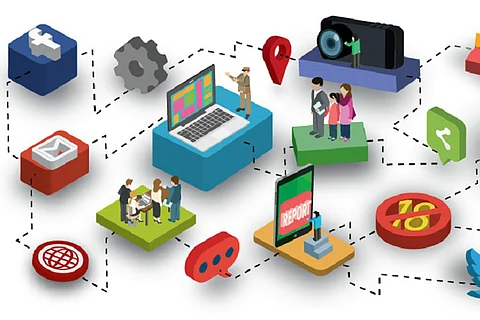

If you’ve been a victim of online child sex imagery or come across such content, there’s a way to take it down.
On September 19, Mumbai-based NGO Prerana’s Aarambh India Initiative (AII) will introduce India’s first internet hotline for reporting online child sex abuse content.
Launched by Minister of Women and Child Development Maneka Gandhi, the hotline will be hosted on aarambhindia.org. It will be run in collaboration with UK-based Internet Watch Foundation (IWF) which collaborates with the UK police to take down images reported by people there.
Indian citizens can report the url of the sexual abuse images or videos featuring a child below the age of 18 on the hotline. People also have the option to remain anonymous when they report an abusive content.

Once a complaint is made, it will be assessed by a team of analysts at IWF who will assess criminality of content and its severity against UK law and IWF’s remit in the UK.
Siddharth Pillai, co-director of Aarambh explains that an IWF team will handle the reports in the pilot stage and use UK law as a benchmark to judge criminal content. Aarambh is in the process of setting up networks with investigative agencies in India, and they will streamline their own operations as complaints come in.

This is how IWF will handle complaints.
For instance, if you find something on Facebook or Twitter and report it to the hotline, IWF can take it down pretty quickly because many social media companies and internet service providers (ISPs) are its members. The url to content hosted on other servers is simply added on IWF’s block list, which these companies and ISPs keep track of, and just remove access to pages which host child sex abuse content.
Ensuring removal of content may not always be possible depending on country-specific laws, or may take time due to legal procedure.
Content once removed will be assigned a hash or unique number generated from data in the content. This will be used to identify and remove copies and prevent future uploads.
Aarambh will also provide assistance to investigative agencies and rehabilitation to victims and their families when required.
Siddharth says that even though instances of child sex imagery becoming more prevalent and children being victimised online are on the rise, the scale of the problem in India is still unknown due to lack of data.
According to a 2007 Government of India report on Child Sexual Abuse, 4.46% of 12,000 children surveyed had been photographed in the nude. Since then, Siddharth says, the increase has been “exponential”.
Between 2013 and 2014, there has been a 100% increase in the number of cases filed under "publication and transmission of obscene" material, including child sexual abuse material, Aarambh says in one of its own reports.
Siddharth adds victims are often blackmailed into silence with threats of disseminating pictures or videos of abuse or even morphed ones, which delays the disclosure of crime. These videos are also used to groom children as well.
For instance, a minor girl was allegedly kidnapped and raped by five men in Karwar in Karnataka in April 2016. The culprits video-graphed the offence and threatened to leak the video if she revealed it to anyone.
While Siddharth acknowledges that there are challenges when it comes to restricting content on the internet, he is positive that the hotline will be fairly successful on the public internet.
“Tackling the issue is a multi-layered process of which the hotline is just one part. We need awareness, empowerment, government assistance, policy and education. And the priority must be safety of children at every level,” he says.